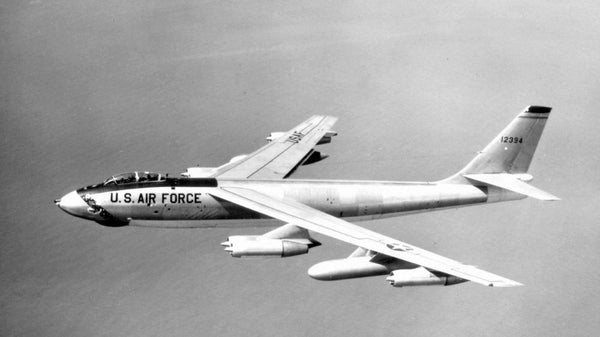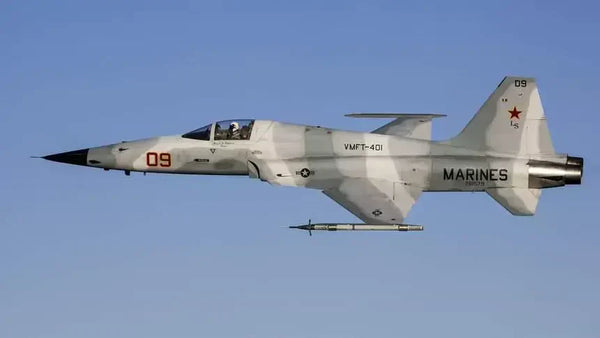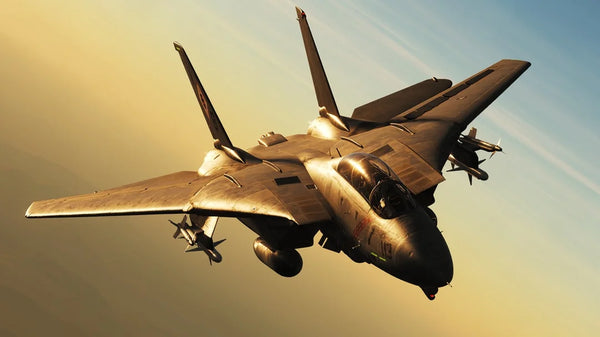In the annals of aviation, few aircraft cast as long and intriguing a shadow as the F-117 Nighthawk. Often referred to as the "Stealth Fighter," though technically a ground-attack aircraft, the F-117 wasn't just another jet; it was a revolution, a paradigm shift that fundamentally reshaped modern aerial warfare and aircraft design. It holds the undeniable distinction of being the world’s first operational stealth aircraft, a true pioneer that proved the impossible was indeed achievable.
Origins of the Stealth Concept
The concept of stealth wasn't born in a vacuum; it was forged in the crucible of the Cold War. As radar technology advanced, the need to evade detection became paramount. Imagine an aircraft that could slip past enemy defenses like a ghost in the night – that was the ultimate goal. Early research focused on two key areas: radar-absorbing materials (RAM) and shaping principles that could deflect radar waves. It was within the legendary confines of Lockheed’s Skunk Works, a place synonymous with audacious innovation, that these nascent ideas began to coalesce into the foundation of what we now know as stealth design.

Development of the F-117 Program
The journey from concept to reality was a clandestine and challenging one. The F-117 program officially began with the launch of the "Have Blue" experimental program in the 1970s. This secretive initiative saw the development and testing of sub-scale prototypes, pushing the boundaries of aerodynamic and radar-evading capabilities. The transition from these experimental designs to full-scale production was fraught with design and engineering challenges, as engineers grappled with unprecedented aerodynamic compromises and the complexities of integrating cutting-edge stealth technologies.
Design and Technical Features
Perhaps the most striking feature of the F-117 is its unique, angular "faceted" shape. This wasn't for aesthetics; it was a radical departure from traditional aircraft design, meticulously crafted to deflect radar waves away from their source.

These angles, combined with specialized radar-absorbing materials (RAM) and coatings, made the F-117 incredibly difficult to detect. While not a speed demon, it was powered by two General Electric F404 turbofan engines, offering a respectable range and the ability to carry a variety of precision-guided munitions. Its cockpit, though seemingly anachronistic by today's standards, was advanced for its time, integrating sophisticated avionics for accurate navigation and targeting
Entry into Service
The F-117's first flight in 1981 was shrouded in absolute secrecy, a testament to the revolutionary nature of the program. It officially entered service with the U.S. Air Force in 1983, initially met with a mix of skepticism and awe. Its deployment was highly limited, and its very existence was a closely guarded secret, earning it the nickname "the secret squirrel."
Combat History
The world first truly witnessed the F-117's capabilities during the invasion of Panama in 1989. However, it was the Gulf War in 1991 that cemented its legendary status. Operating virtually unchallenged, the Nighthawk executed precision strikes against high-value targets in Iraq, demonstrating unparalleled effectiveness against sophisticated air defenses. Later operations in Kosovo and the Balkans in 1999 further showcased its ability to penetrate hostile airspace. The tragic loss of one F-117 in 1999 to a Serbian surface-to-air missile served as a stark reminder of the complexities of warfare and the continuous evolution of countermeasures.
Comparisons and Legacy
The F-117 was a stark contrast to the traditional fighter jets of its era. It sacrificed speed and maneuverability for unparalleled stealth, a trade-off that proved invaluable in specific combat scenarios. Its success irrevocably influenced the design of subsequent stealth aircraft, paving the way for iconic platforms like the B-2 Spirit bomber, the F-22 Raptor air superiority fighter, and the multirole F-35 Lightning II. The Nighthawk proved that stealth was not a gimmick, but a fundamental advantage.
Retirement and Continued Influence
The F-117 was officially retired from active service in 2008, having served its purpose and being succeeded by more advanced stealth platforms. However, its story didn't quite end there. Limited numbers of F-117s continue to undertake flights for training and testing purposes, a quiet testament to their enduring utility and the ongoing relevance of their stealth principles. The aircraft's reputation as a game-changer in aviation history remains firmly intact.
Legacy
The F-117 Nighthawk stands as a monumental milestone in stealth technology, a true pioneer that fundamentally altered the landscape of modern warfare and aircraft design. Its iconic, angular silhouette symbolizes the dawn of a new era, where invisibility became a weapon. The F-117’s legacy is not just in its combat record, but in its symbolic place as the aircraft that dared to be invisible, forever changing how we perceive and conduct aerial combat.
Own a Piece of Aviation History!
Inspired by the groundbreaking design of the F-117 Nighthawk? Bring home your own piece of this legendary aircraft's legacy with our meticulously crafted F-117 Nighthawk Wood Model from Premium Wood Art. Each model captures the rugged design and enduring spirit of this magnificent machine, serving as a permanent tribute to the courage of the crews and the life-saving role of the most famous aircraft of its era.
Each detail captures the revolutionary spirit of the original, making it a perfect display piece for aviation enthusiasts and history buffs alike. Add Timeless Craftsmanship to Your Collection – Shop Now.



